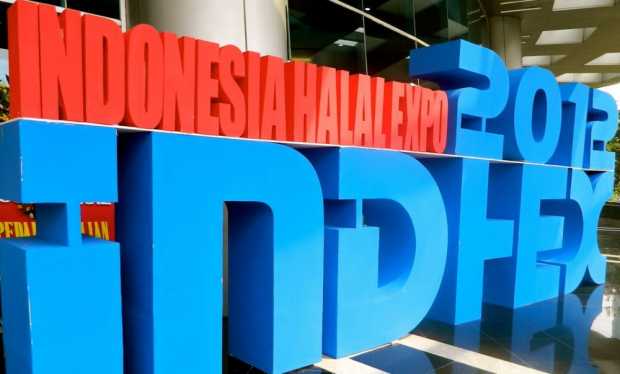Not a member yet? Sign Up!
Info
Please use real email address to activate your registration

Halal foods currently account for approximately one-fifth of world food trade. The industry, according to Euromonitor International, keeps growing at US$500 billion annually and in 2010 was estimated to be US $1.2 trillion in value.
Halal foods and drinks mean those that follow the dietary laws outline in Al Quran, Muslim’s holy book.
Islam is a religion that guides the lives of its followers in the personal, social, and public aspects of their lives. Consuming halal foods and drinks, the followers believe, will lead to good health, whereas consuming anything prohibited (haram) will lead to some form of disease and suffering.
Who looks for halal?
The largest consumer of halal foods is the Muslim population, for reasons both religious and psychological. Religion can have a profound effect on the mind; therefore halal is a concept that is not taken lightly by Muslims.
The health conscious is another consumer of halal foods. These “health buffs” see halal as a symbol of quality. They understand that in order to be halal, a particular product must go through rigorous inspection through all stages of its production. This ensures the quality and wholesomeness of the food product.
The main requirements for foods to be considered halal encompass several aspects (Chaudry MM):
No pork. Foods that contain pork are considered haram. Gelatin capsules made from pork are considered haram.
No alcohol. Foods may not contain alcoholic substances. However, a consideration is made for medicinal purposes, or for foods that naturally contain a minute amount of alcohol.
No flowing or congealed blood. Products that contain free-flowing blood are generally not sold in the market, however, there are products that are made from blood and derived from it. These are considered haram.
No carnivorous animals with fangs, e.g., lions, dogs, wolves, tigers.
Meat must be slaughtered by a Muslim. This is a practice with a specific process ensuring a humane treatment of animals.
Halal certification
Halal Certification is recognition that products are permitted under Islamic law. In almost all countries halal certification, is conducted by many independent agencies, associations, councils, and federations, and is regulated under labeling law (World Halal Forum).
Obtaining halal certification is a multi-step process that requires time and commitment from both the producer, and the halal-certifying organization. The cost may vary from product to product, and is generally determined on a case-by-case basis.
In Indonesia, the authority for halal certification is the Assessment Institute for Foods, Drugs and Cosmetics, at the Indonesian Council of Ulama (LPPOM MUI)
LPPOM MUI recognizes halal certificates issued by approved halal certification body only for products manufactured in the country where the halal certification body is located. Products made in Europe can use halal certificate by any approved halal certification body located in Europe.
As of May 2012 LPPOM MUI has approved 38 Halal Certifier Bodies from Asia, Australia, Europe, United States and Latin America, encompassing 33 bodies in (cattle) slaughtering category, 29 bodies in food processing category, and 11 bodies in flavor category.
To provide a better service for those seeking certification, LPPOM MUI recently launched the Certification Online Service System (CEROL SS) 23000
INDHEX 2012
As a country with the largest Muslim population in the world, Indonesia is a lucrative market for foods and drinks manufactures.
The LPPOM MUI saw the needs for public awareness and education on halal products and has, since last year, been organizing the Indonesia Halal Expo (INDHEX). Themed halal is my life this year’s expo was held on 5-8 July in Jakarta.
The chair of LPPOM MUI reported, there were 130 participants from fifteen countries in INDHEX 2012 representing national companies, multinationals and small and medium enterprises.
INDHEX 2012 also held training on International Halal Assurance System with participants from halal certification agencies abroad, namely Singapore, Philippines, Thailand, South Korea, Japan, China, United Arab Emirates, India, Qatar, France, and Switzerland.
In addition to the technical programs, INDHEX 2012 organized events for children, such as coloring and story telling. Several talk shows enlivened the exhibition with topics of halal nutrition, halal lifestyle, and halal community gathering. Cooking demonstrations, food decorating competitions and product sampling attracted many groups to visit the exhibition.
Tapping the market
The global Muslim population is projected to increase from 1.6 billion in 2010 to 2.2 billion by 2030, according to population projections by the Pew Research Center’s Forum on Religion & Public Life.
Halal is different from other foods in its preparation, processing, ingredients, handling, and the specific slaughter techniques.
To reap the benefits of this market, players in the food and beverage industry must further educate themselves on the needs of the Muslim consumers.
-----------
Photo by Dian Anggraini.
Online halal certification service for Indonesia: e-lppommui.org
Note: This blog post is based on Halal in the Food Industry, an academic poster produced and presented by Omar Niode in 2006 at the University of California, Davis.